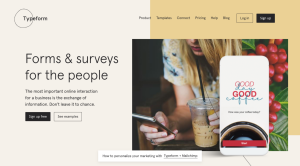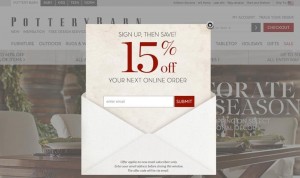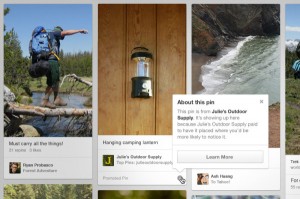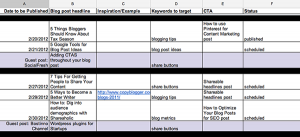Social media is broken. It feels impossible now to keep up with friends and news in the same place—to be informed, entertained, and part of a community all at once. As Ryan Broderick has written, there’s no longer anywhere to figure out what everyone’s talking about, and the addition of competing Twitter clones makes the idea of an “everyone” feel more threadbare than ever. The news element has been degraded by For You feeds, Threads’ seeming desire to avoid news altogether, and X’s overwhelming toxicity.
LinkedIn, on the other hand, has connections and news, and its perennial lack of controversy has led many folks to claim that it’s now the place to be. But is it? I knew LinkedIn was more than just a résumé storage unit, but didn’t see much point in spending time there. But what if I did—and went a step further, putting it to the test by making it my sole social channel?
When I checked in on the first day, having hastily created an account over a decade ago and let it gather digital dust ever since, I found it a welcoming beacon of enthusiasm, filled with friends I hadn’t seen on social media in ages. Here they were, having apparently ditched my preferred platforms years ago, thriving at work and life, in general—each with a robust circle of pals cheering on even their most minor career successes. I immediately felt the same lifestyle-FOMO Instagram is famous for, but about being a fully functioning adult professional.
Each morning of my three-week full-immersion began with a Twitter-like pulse check on current events. I scrolled through LinkedIn’s News section: a curated feed of business-y headlines and a selection of users’ posts about them. Nobody seemed to be spoiling for a futile argument. Politics only crept in every now and then when, say, a story about Disney’s annual profit statement invoked Ron DeSantis. The lack of tension was palpable and constant. It was homeostasis.
A few days into the experiment, I went to Twitter briefly for a work-related task. Leading its trending section was the phrase, “99% Hitler.” Seeing it produced a familiar, urgent gut reaction—the queasy euphoria of imminent anger, difficult to resist. I absolutely had to know who or what was 99% Hitler. Click. It turned out to be something stupid somebody had tweeted, if you can believe that. Meanwhile, back at LinkedIn, the top trending news items were about inflation cooling and Target having high hopes for the holidays. (Girl, same!)
After looking at each day’s news, I’d scroll through posts from my connections—a more realistic term for who some of these folks are to me than “friends” or “followers.” An unexpected problem gradually emerged: These people did not post nearly enough to supply the requisite steady stream of interesting stuff to engage with. As recently as March 2022, 51% of Twitter users posted regularly, ensuring continual content. Although the quality of those posts may have diminished dramatically in the past two years, the velocity has not. I didn’t necessarily need Twitter’s firehose on LinkedIn, but I’d counted on more than just a dripping spigot.
This issue wasn’t exclusive to my feed either—only 1% of LinkedIn users actually create content. Thankfully, posts from weeks ago share space with the latest, alongside random material my connections engaged with. Being privy to these dispatches from strangers exposed me to an orgy of advice, including advice about giving and receiving advice: influencer-inception.
When the people I actually know write posts, they often involve some benchmark they’ve just achieved or whichever conference they’re attending. (More conferences, summits, and expos are happening each day than I could have ever imagined.) I click “like” on every picture I see of chummy colleagues in matching laminated badges, every workiversary, every celebration of a promotion, or a new position. Everyone is proud of their accomplishments, without even a hint of ironic detachment, and I’m happy for them. It may be a corporatized form of positivity—positivity dressed in beige separates—but in a time of unparalleled negativity, it’s refreshing.
All this positivity, however, doesn’t exactly jibe with the snark that animates much of my posts on other platforms. My first LinkedIn offering—an observation about annoying email sign-offs—elicits no reaction whatsoever. My next few posts are tepidly received as well. Clearly, I will have to channel my inner thinkfluencer if I ever want to join this community.
Since advice is the coin of the realm on LinkedIn, I start thinking of material to share that might actually be useful beyond the fleeting pleasures of a topical joke. I write about why emailing myself little notes is more effective than any dedicated notes app; about Don Draper’s most inspirational moment on Mad Men; about which of Emma Stone’s career moves more creatives should emulate—all of which are things I think about a lot, but never seemed to have the context or impetus to express elsewhere. More and more people start to respond.
Although it was a nice vacation from my usual mode of posting, I gradually recognized how much I missed sharing silly little jokes and observations online. One day, I saw a big box at the grocery store with the word “eggs” written on the side in enormous letters. Without deciding to do it, purely on autopilot, I snapped a photo and mentally composed a gaming joke based on the visual pun of an “eggs box.” That is just how my prison of a brain works. But this dumb joke would never fly on LinkedIn. It had no context there. The vibe was off.
I broke the rules of my own experiment and posted the box on Instagram Stories. A parade of laughing-face emojis flooded my notifications; a taste of Twitter-methadone. I wanted more, though. Not just the dopamine hit of validation, but also low-stakes arguments about recent movies. Trenchant smack-talk about messy politicians. An impenetrably esoteric meme or two.
Right then, I knew I could never make LinkedIn my primary form of social media. It had certainly proven its utility, but only as another crayon in the box. I need more shades to work with—and to color outside the lines sometimes. However, the last few weeks also proved that I could probably stand to present more as a Fully Functioning Adult Professional on other platforms more often, and spend less time on them altogether.
Most social media sites are designed for users to haunt them like ghosts—lurking in the background at all times. LinkedIn is more a place users drop by in a hurry before getting on with their clinically busy day. What this experiment clarified for me is that we might all be better off treating these platforms less like purgatorial haunted houses and more like an office break room.
When I log in this morning, even though I no longer “have to,” I quickly discover that Sydney Sweeney’s new film is doing such brisk business that the big-screen rom-com may be back, and that a former coworker and current friend just got a huge promotion. I add a congratulatory note to my friend’s post, and it feels like bumping into each other in a massive, interconnected, multi-business virtual hallway. Then I send her an inside joke in a text message.
(11)







